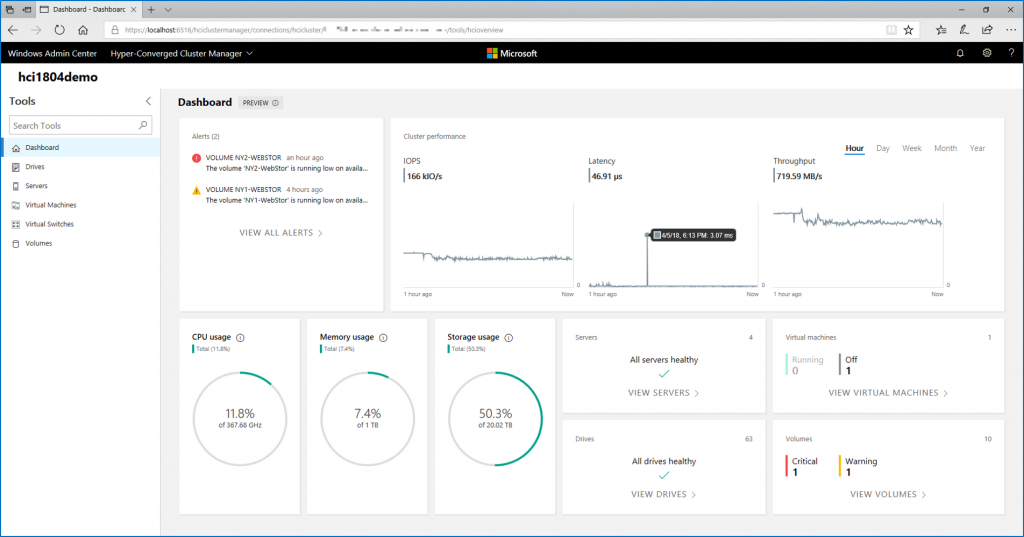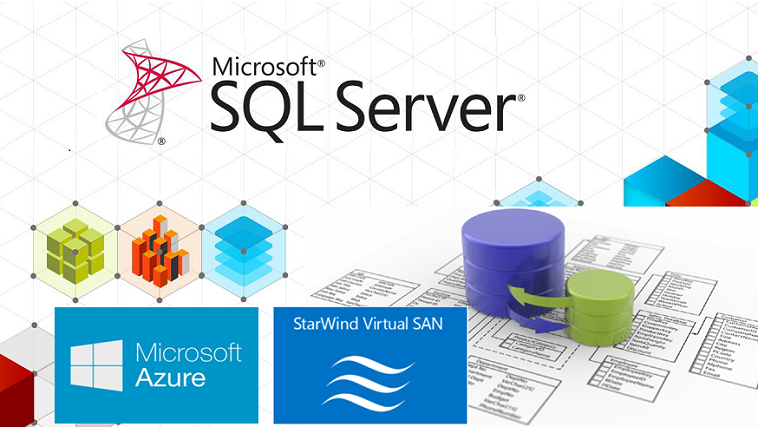SQL Server 2012/2014 AlwaysOn Availability Groups:
- Article Summary
- Part 1 – AlwaysOn Introduction
- Part 2 – AlwaysOn Design
- Part 3 – Install and Configure Windows Server 2012 R2 in Core mode
- Part 4 – WSFC Cluster Creation
- Part 5 – Install SQL Core on Windows Core Server
- Part 6 – AlwaysOn Availability Groups Creation
- Part 7 – AlwaysOn Availability Groups Creation (Advanced, with dedicated Replication Network)
- Part 8 – Methods to add Database on Availability Groups (SCOM Example)
- Part 9 – AlwaysOn Availability Groups – PowerShell Monitoring
- ANNEX (Part 6/7) – Manage SQL Endpoint
In Part 6, the AAG1 and AAG2 Availability Groups was created from wizard. In this part, I will do an advanced creation of AAG: AAG-3 and AAG-4. Instances members of these AAG will be configured to communicate over a replication Network. I will do the configuration with Transact-SQL and I will write later an article on how to configure AAG through PowerShell.
Now we have to create the Availability Groups: AAG-3SCOM and AAG-4SCOM on instances AOI2 and AOI4:
| AAG |
Members (Instance) |
Default Role |
AAG Listener |
Databases |
||
|
Name |
IP |
Port |
||||
| AAG-1 | m-sqla1\aoi1 | Primary |
AAG-1L |
10.0.1.41 |
1764 |
DBTest01 |
| m-sqla3\aoi3 | Secondary | |||||
| AAG-2 | m-sqla1\aoi1 | Secondary |
AAG-2L |
10.0.1.42 |
1764 |
DBTest02 |
| m-sqla3\aoi3 | Primary | |||||
| AAG-3SCOM | m-sqla2\aoi2 | Primary |
AAG-3L |
10.0.1.43 |
1764 |
SCOM OP |
| m-sqla4\aoi4 | Secondary | |||||
| AAG-4SCOM | m-sqla2\aoi2 | Secondary |
AAG-4L |
10.0.1.44 |
1764 |
SCOM DW DB Orchestrator |
| m-sqla4\aoi4 | Primary | |||||
IP use for Instances Endpoints (subnet 10.0.20.0/24):
|
Hostname |
IP Public Network |
IP Cluster Network |
IP Replication Network |
| M-SQLA1 | 10.0.1.21 | 10.0.10.21 | n/a |
| M-SQLA2 | 10.0.1.22 | 10.0.10.22 | 10.0.20.22 |
| M-SQLA3 | 10.0.1.23 | 10.0.10.23 | n/a |
| M-SQLA4 | 10.0.1.24 | 10.0.10.24 | 10.0.20.24 |
For people who don’t know SCOM, this product require two Databases: one DB “Operation” (for live monitoring) and one DB “Data warehouse” (for historical monitoring). These Databases require performances, so with this configuration, in nominal mode, each DB is hosted on a different Instance and have a replica on the other.
Create Availability Group: AAG-3SCOM
This AAG will host the SCOM “OperationsManager” database.
1 – Create Instances Endpoint
Network Configuration: The only difference with the Endpoints created for the first two AAG (with the default configuration) is that we add an IP Address of the dedicated Replication network:
– LISTENER_IP = (10.0.20.22) – for the Instance AOI2
– LISTENER_IP = (10.0.20.22) – for the Instance AOI4
Endpoints rights: Note the Grant Connect command that it gives rights to the other Instances account (MSA):
– GRANT CONNECT ON ENDPOINT::[Hadr_endpoint] TO [lab1\svc-sqldbe4$] – on the Instance AOI2
– GRANT CONNECT ON ENDPOINT::[Hadr_endpoint] TO [lab1\svc-sqldbe2$] – on the Instance AOI4
Also, the script checks if the Extended Event session “AlwaysOn_health” is started.
Script “AAG-3SCOM-Creation-1-Endpoint.sql“:
--- YOU MUST EXECUTE THE FOLLOWING SCRIPT IN SQLCMD MODE. -- Create Login for both Instances ------------------------------------- :Connect M-SQLA2\AOI2,1764 USE [master] GO CREATE LOGIN [lab1\svc-sqldbe4$] FROM WINDOWS GO :Connect M-SQLA4\AOI4,1764 USE [master] GO CREATE LOGIN [lab1\svc-sqldbe2$] FROM WINDOWS GO - Create ENDPOINT for Instance: AOI2 ----------------------------------- :Connect M-SQLA2\AOI2,1764 USE [master] GO CREATE ENDPOINT [Hadr_endpoint] AS TCP (LISTENER_PORT = 5022, LISTENER_IP = (10.0.20.22)) FOR DATA_MIRRORING (ROLE = ALL, ENCRYPTION = REQUIRED ALGORITHM AES) GO IF (SELECT state FROM sys.endpoints WHERE name = N'Hadr_endpoint') <> 0 BEGIN ALTER ENDPOINT [Hadr_endpoint] STATE = STARTED END GO use [master] GO GRANT CONNECT ON ENDPOINT::[Hadr_endpoint] TO [lab1\svc-sqldbe4$] GO -- Create ENDPOINT for Instance: AOI4 ---------------------------------- :Connect M-SQLA4\AOI4,1764 USE [master] GO CREATE ENDPOINT [Hadr_endpoint] AS TCP (LISTENER_PORT = 5022, LISTENER_IP = (10.0.20.24)) FOR DATA_MIRRORING (ROLE = ALL, ENCRYPTION = REQUIRED ALGORITHM AES) GO IF (SELECT state FROM sys.endpoints WHERE name = N'Hadr_endpoint') <> 0 BEGIN ALTER ENDPOINT [Hadr_endpoint] STATE = STARTED END GO use [master] GO GRANT CONNECT ON ENDPOINT::[Hadr_endpoint] TO [lab1\svc-sqldbe2$] GO -- Start Extended Event session: "AlwaysOn_health" --------------------- :Connect M-SQLA2\AOI2,1764 IF EXISTS(SELECT * FROM sys.server_event_sessions WHERE name='AlwaysOn_health') BEGIN ALTER EVENT SESSION [AlwaysOn_health] ON SERVER WITH (STARTUP_STATE=ON); END IF NOT EXISTS(SELECT * FROM sys.dm_xe_sessions WHERE name='AlwaysOn_health') BEGIN ALTER EVENT SESSION [AlwaysOn_health] ON SERVER STATE=START; END GO :Connect M-SQLA4\AOI4,1764 IF EXISTS(SELECT * FROM sys.server_event_sessions WHERE name='AlwaysOn_health') BEGIN ALTER EVENT SESSION [AlwaysOn_health] ON SERVER WITH (STARTUP_STATE=ON); END IF NOT EXISTS(SELECT * FROM sys.dm_xe_sessions WHERE name='AlwaysOn_health') BEGIN ALTER EVENT SESSION [AlwaysOn_health] ON SERVER STATE=START; END GO
You cannot execute this script from the Management Studio (the command “Connect” is not recognized). You have to use the “sqlcmd” utility.
For more information, see TechNet “sqlcmd How-to Topics“: https://technet.microsoft.com/en-us/library/hh213540.aspx
From the M-SQLA2 server, start a CMD and execute:
| sqlcmd -S M-SQLA2\AOI2 -i c:\tools\AAG-3SCOM-Creation-1-Endpoint.sql |

Check Endpoint creation, use script “SQL_Endpoint-Get-List.ps1”
.\SQL_Endpoint-Get-List.ps1 -SQLServer “M-SQLA2” -InstanceName “AOI2,1764”

From SQL, you can check the TCP Listener:
— Get TCP Listener list
SELECT * FROM sys.dm_tcp_listener_states;

Or via netstat:
| netstat -ano | findstr 5022 |

2 – Create Availability Group
Network Configuration: So now we can configure the Endpoint URL on the replication network (same IP as the Endpoint):
– ENDPOINT_URL = N’TCP://10.0.20.22:5022′) – for the Instance AOI2
– ENDPOINT_URL = N’TCP://10.0.20.24:5022′) – for the Instance AOI4
AG Listener: The script create the listener with the DNS name and the VIP:
– ADD LISTENER N’AAG-3L’ ( WITH IP ((N’10.0.1.43′, N’255.255.255.0′)), PORT=1764 )
Script “AAG-3SCOM-Creation-2-AG”:
--- YOU MUST EXECUTE THE FOLLOWING SCRIPT IN SQLCMD MODE. -- CREATE AAG ---------------------------------------------------------- :Connect M-SQLA2\AOI2,1764 USE [master] GO CREATE AVAILABILITY GROUP [AAG-3SCOM] WITH (AUTOMATED_BACKUP_PREFERENCE = SECONDARY) FOR REPLICA ON N'M-SQLA2\AOI2' WITH ( ENDPOINT_URL = N'TCP://10.0.20.22:5022', FAILOVER_MODE = AUTOMATIC, AVAILABILITY_MODE = SYNCHRONOUS_COMMIT, BACKUP_PRIORITY = 50, SECONDARY_ROLE(ALLOW_CONNECTIONS = ALL)), N'M-SQLA4\AOI4' WITH ( ENDPOINT_URL = N'TCP://10.0.20.24:5022', FAILOVER_MODE = AUTOMATIC, AVAILABILITY_MODE = SYNCHRONOUS_COMMIT, BACKUP_PRIORITY = 50, SECONDARY_ROLE(ALLOW_CONNECTIONS = ALL)); GO -- Create Listener ----------------------------------------------------- :Connect M-SQLA2\AOI2,1764 USE [master] GO ALTER AVAILABILITY GROUP [AAG-3SCOM] ADD LISTENER N'AAG-3L' ( WITH IP ((N'10.0.1.43', N'255.255.255.0')), PORT=1764 ); GO -- JOIN Other Instances ------------------------------------------------ :Connect M-SQLA4\AOI4,1764 ALTER AVAILABILITY GROUP [AAG-3SCOM] JOIN; GO
From the M-SQLA2 server, start a CMD and execute:
| sqlcmd -S M-SQLA2\AOI2 -i c:\tools\AAG-3SCOM-Creation-2-AG.sql |

Now from netstat we can see that instances communicate over the replication network (10.0.20.0):

Check the Availability Group status from the Dashboard:

Status if failed because there is no Database in the AG:

Create Availability Group: AAG-4SCOM
Now we have to create the last AG:
This AAG will host the SCOM “OperationsManagerDW” database.
Instance Endpoints are already created (previously with the AAG-3). So we just have to create the Availability Group.
Network Configuration: The same Endpoint URL as the AAG-3 will be used:
– ENDPOINT_URL = N’TCP://10.0.20.22:5022′) – for the Instance AOI2
– ENDPOINT_URL = N’TCP://10.0.20.24:5022′) – for the Instance AOI4
AG Listener IP: 10.0.1.44
– ADD LISTENER N’AAG-3L’ ( WITH IP ((N’10.0.1.44′, N’255.255.255.0′)), PORT=1764 );
Script “AAG-4SCOM-Creation-1-AG”:
-- CREATE AAG ---------------------------------------------------------- :Connect M-SQLA4\AOI4,1764 USE [master] GO CREATE AVAILABILITY GROUP [AAG-4SCOM] WITH (AUTOMATED_BACKUP_PREFERENCE = SECONDARY) FOR REPLICA ON N'M-SQLA4\AOI4' WITH ( ENDPOINT_URL = N'TCP://10.0.20.24:5022', FAILOVER_MODE = AUTOMATIC, AVAILABILITY_MODE = SYNCHRONOUS_COMMIT, BACKUP_PRIORITY = 50, SECONDARY_ROLE(ALLOW_CONNECTIONS = ALL)), N'M-SQLA2\AOI2' WITH ( ENDPOINT_URL = N'TCP://10.0.20.22:5022', FAILOVER_MODE = AUTOMATIC, AVAILABILITY_MODE = SYNCHRONOUS_COMMIT, BACKUP_PRIORITY = 50, SECONDARY_ROLE(ALLOW_CONNECTIONS = ALL)); GO -- Create Listener ----------------------------------------------------- :Connect M-SQLA4\AOI4,1764 USE [master] GO ALTER AVAILABILITY GROUP [AAG-4SCOM] ADD LISTENER N'AAG-4L' ( WITH IP ((N'10.0.1.44', N'255.255.255.0')), PORT=1764 ); GO -- JOIN Other Instances ------------------------------------------------ :Connect M-SQLA2\AOI2,1764 ALTER AVAILABILITY GROUP [AAG-4SCOM] JOIN; GO
From the M-SQLA2 server, start a CMD and execute:
| sqlcmd -S M-SQLA4\AOI4 -i c:\tools\AAG-4SCOM-Creation-1-AG.sql |

Now the configuration is done, we can use the AAG.

Next PART: Installation of SCOM with AlwaysOn Availability Groups.







